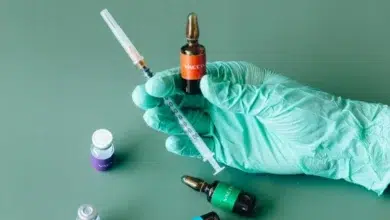Cancer Prevention Through Lifestyle: What You Should Know

Cancer prevention and early detection are critical in reducing the burden of cancer and improving survival rates. While lifestyle changes can significantly lower cancer risk, early diagnosis through screening and awareness of symptoms plays an equally vital role. This article provides an informative overview of how lifestyle, medical prevention, and symptom recognition contribute to cancer prevention from an early detection standpoint.
ALSO READ: The Rise of Plant-Based Living
Lifestyle Changes to Reduce Cancer Risk
Many cancers are linked to modifiable lifestyle factors. Avoiding tobacco use and exposure to secondhand smoke remains the single most effective way to reduce cancer risk. Maintaining a healthy weight, engaging in regular physical activity, and eating a balanced diet rich in fruits, vegetables, and whole grains also lower the risk of several common cancers.
Additionally, protecting the skin from ultraviolet radiation by avoiding excessive sun exposure and using sunscreen can prevent skin cancers. Vaccinations against cancer-causing infections, such as the human papillomavirus (HPV) vaccine, provide powerful protection against cervical and other cancers linked to HPV. Hepatitis B vaccination also reduces the risk of liver cancer.
Medical Preventative Measures: Screening and Vaccination
Cancer screening is a cornerstone of early detection. Screening tests aim to identify cancer before symptoms appear, allowing treatment at earlier, more curable stages. Common screening tests include mammograms for breast cancer, Pap smears and HPV testing for cervical cancer, colonoscopies for colorectal cancer, and low-dose CT scans for lung cancer in high-risk individuals.
The World Health Organization highlights that early diagnosis programmes focus on increasing awareness of cancer symptoms among the public and healthcare providers, improving access to diagnostic services, and ensuring timely referral and treatment. Despite advances in screening, less than half of all cancers are detected through screening alone, making symptom recognition essential.
Vaccination programs against HPV and hepatitis B virus are critical medical prevention strategies that reduce the incidence of infection-related cancers. These vaccines are most effective when administered before exposure to the viruses, typically in adolescence.
CHECK OUT: Mindful Mornings: Creating a Daily Routine That Reduces Stress
Recognising Cancer Symptoms for Early Diagnosis
Early diagnosis depends on recognizing warning signs and seeking medical attention promptly. Common symptoms that may indicate cancer include:
- Unexplained weight loss
- Persistent fatigue
- Unusual lumps or swelling
- Changes in bowel or bladder habits
- Persistent cough or hoarseness
- Unexplained bleeding or bruising
- Non-healing sores or ulcers
- Changes in skin appearance or moles
Awareness campaigns encourage individuals to consult healthcare professionals without delay if such symptoms occur. Healthcare providers are trained to evaluate symptoms and provide rapid diagnostic testing to confirm or rule out cancer.
The Importance of Combining Prevention and Early Detection
The CANSA organisation emphasises that combining lifestyle prevention, vaccination, screening, and early diagnosis is essential to reduce cancer incidence and mortality. Early detection not only improves prognosis but also reduces treatment complexity and costs. Research continues to advance personalized screening approaches, using biomarkers and risk stratification to identify individuals at higher risk and tailor prevention and detection strategies accordingly.
A Way Forward
Preventing cancer through lifestyle changes and vaccinations, alongside regular screening and prompt attention to symptoms, forms a comprehensive strategy for early detection. By reducing exposure to risk factors and catching cancers at an early stage, individuals can significantly improve their chances of successful treatment and survival. Public education and accessible healthcare services remain vital to achieving these goals.



